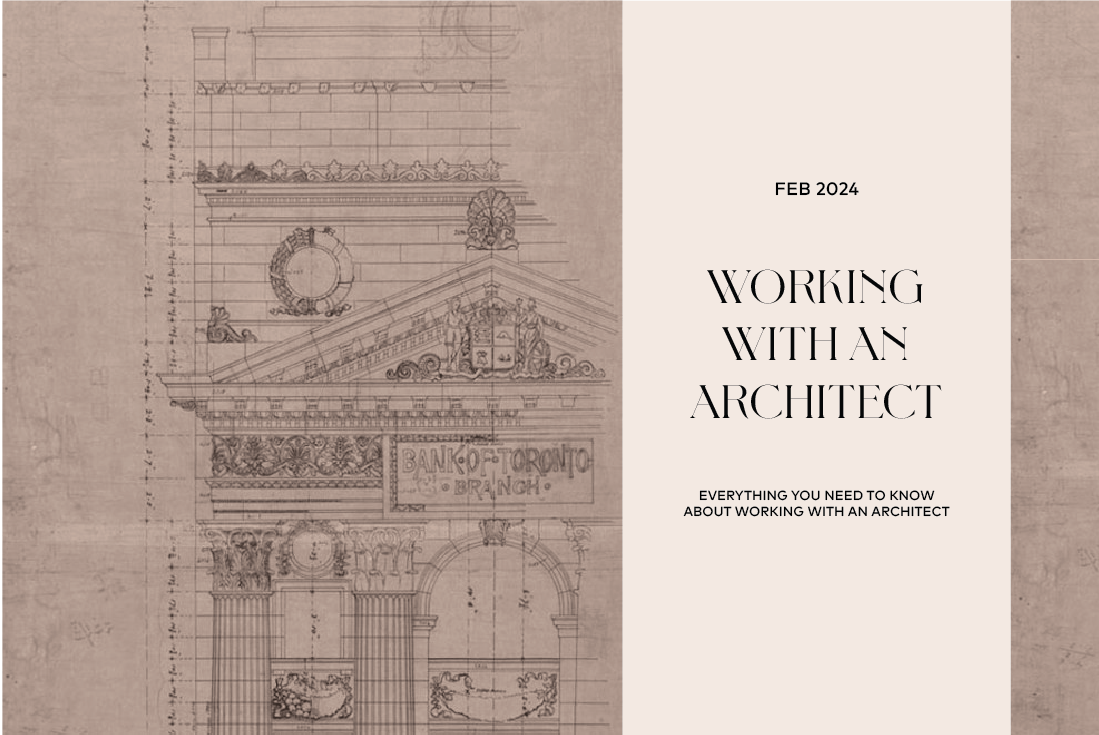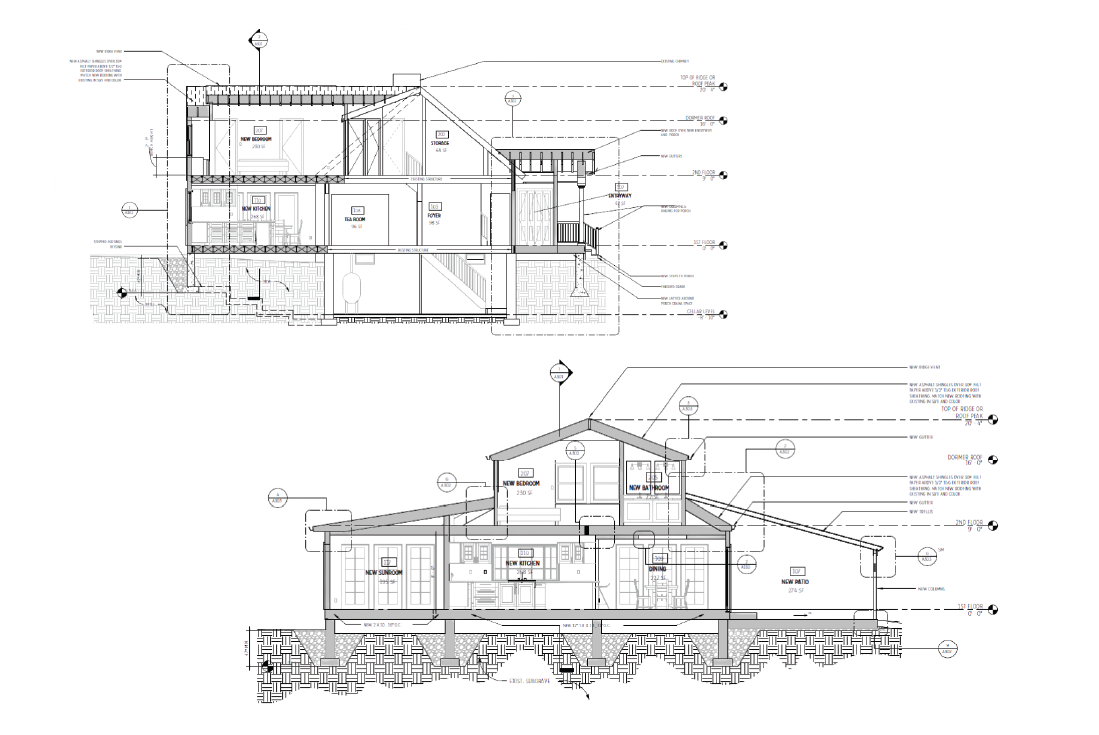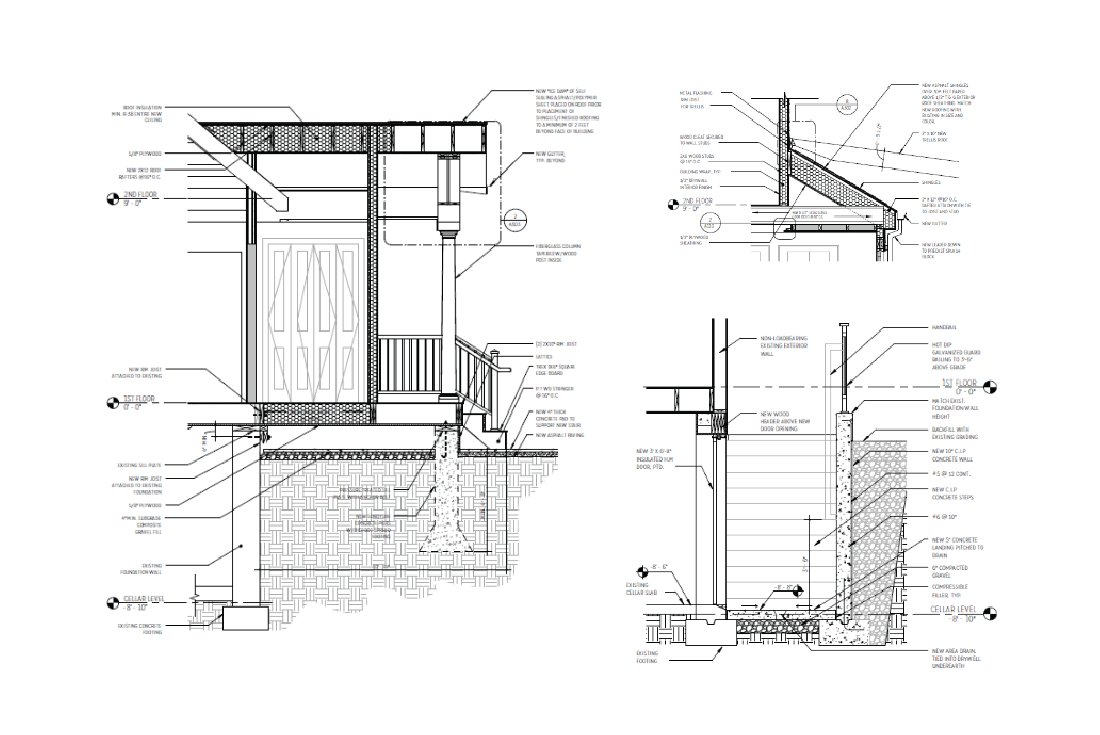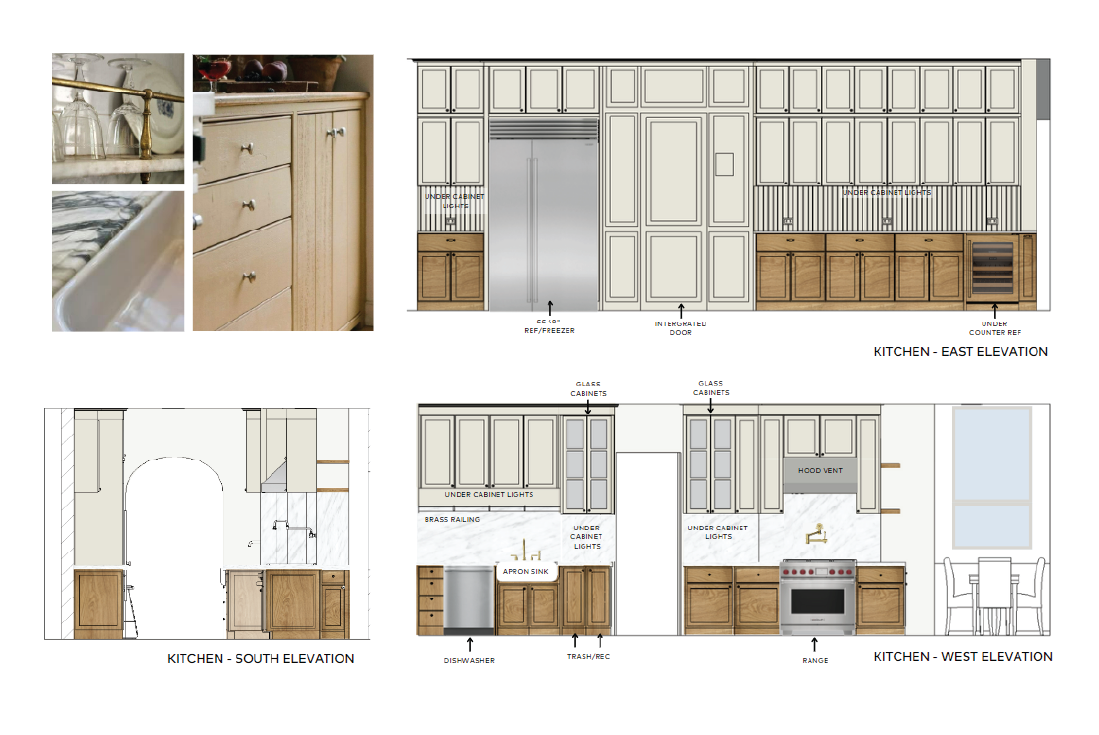Here’s What It’s Like To Work With An Architect

What It’s Like To Work With An Architect
If you are considering renovating or building a new house, you will likely need to work with an architect. During my time in the field, I have discovered that most people don’t really understand what an architect does, let alone if they need one. Thanks to books like The Fountainhead, there are so many misconceptions about our profession. Most people either think we are draftsmen or tortured souls who spend our days wearing black and furiously sketching abstract shapes, no one understands.
The reality is neither. This week I am demystifying what architects do and what it’s like to work with one.
What does an architect do?


Architects are first and foremost responsible for the health and safety of our buildings. Building science, design, local building codes, zoning, and other regulations are just a few things we draw from to create your projects. We are problem solvers who use design and function to create building forms that serve a particular type of use.
We work alongside interior designers, engineers, and other tradespeople to holistically create the perfect solution for your project. As your architect, we are your biggest ally and advocate during a project guiding you every step of the way. At the same time, we are taking ideas and making them into realistic spaces.
How do I know if I need an architect?
In general, if you are doing ground-up construction, moving walls in a renovation, and making alterations beyond finishes, you need an architect. Before starting your project check with your local Building Department if your project requires signed and sealed drawings. In many states, single-family homes or very small buildings can be done without an architect signing off. However, I would still strongly recommend working with one to ensure that you are getting a well-thought-out design.

I see many poorly designed stock plans being sold to clients who want to save money by not hiring an architect. That ends up costing them more in the long run as they end up having to hire a team to modify the plans they bought to make that plan work for their needs. Working with an architect from the start helps avoid these pitfalls. My advice is to consult with an architect early in the process to understand what you are getting into.
How do I pick an architect?

When looking to work with an architect to work with, several factors are important to consider. Be sure to check with your local state board that the architect you are considering is in fact, licensed. In the US it is illegal to call yourself an architect if you have not met the licensing requirements. These vary by state but generally involve having a higher education degree in architecture, several years of training, and passing 6 exams. Each state has a list of licensed architects, so if your architect’s name isn’t there, pick another professional. Architects should also carry insurance at no cost to you.
Once you verify that our architect is licensed and insured, make sure they have experience in your project type. Architects who do custom residential homes have a very different skill set from those doing commercial projects. Their portfolio should have projects similar to what you would like to build.
Are we compatible work partners?
Beyond the technical qualifications, be sure you like your architect on a personal level. You should enjoy being around the architect you are planning on hiring. Architectural work can be deeply personal and you will be spending a significant amount of time around your architect. If you don’t have a good relationship with them, the project will be very difficult and unpleasant for everyone involved.
When meeting with potential architects, ask them about their work style, values, and what their interests are beyond architecture. These questions will give you a great insight into how this person works and what your interactions will be like.
As an architect, I also ask questions of my potential clients to build rapport and to make sure we are aligned in our values and goals. I deeply care about my clients and the work I do. A good working relationship is critical to make sure the project is a success and enjoyable for all involved.
What is the architectural design process like?

The process for working with an architect varies depending on the project type. Typically projects are done in four design phases. These are schematic design, design development, construction documents, and construction administration.
The Schematic Design Phase
Schematic design is the initial ideation phase of the project. With your project’s goals and must-haves defined, we begin designing different high-level options for you to review. The architect is also researching the latest design trends and developments that work well with your design goals alongside tried and true methods. I recently made predictions for this year’s trends and will be incorporating these in future projects this year.
Schematic design is the most collaborative phase between the client and the architect. We require your input to know if are on the right track. In this phase, we narrow down the spatial arrangement of the rooms as well as determine the overall look and feel of the project. For new builds, this would also be the phase where we analyze your site and determine where the building will sit.
With your approval and sign-off of the schematic design materials, we move on to design development.
The Design Development Phase
In this phase, we start to define the materials and refine the building shape. This is my favorite phase as this is when the client can start to see the project come to life. If we need to coordinate with other trades, such as structural engineers, this is the phase to involve them to avoid issues down the road.
The design development phase is where we are calling out every product and material used. We also finalize the exterior and interior design of the building. All that is left now is to document every decision we made in a set of plans.
The Construction Documents Phase
The construction documentation phase is the most important phase of the whole process, as this is when architects create all the documentation for the contractor to build from. We are creating a detailed roadmap for a qualified builder to execute. Architects are not telling contractors how to build, but we are describing how to achieve our design intent.
Construction documents describe what the project will look like. During this phase, we are also communicating with other trades and coordinating our drawings with theirs so there are no surprises during construction.
Once these drawings are complete, typically we can file them with the building department to get a permit and have the drawings priced by a few different builders to ensure the project meets our client’s budget. Assuming you found the right builder and have your permit ready, you are ready to begin construction and now the fun begins
The Construction Administration Phase
This is both a nerve-racking and exhilarating time for clients. On one hand, you are finally getting your project built after months of preparation. On the other, there are always unpredictable events that may occur during this phase. Change orders, delays, and upcharges all are possible during construction. That is why you need your architect to be involved during this phase as well. We can help advocate and navigate issues that come up on your behalf. Our role during this phase is to make sure the contractor is building according to the drawings. We also clarify any questions the builder may have, or come up with solutions to issues that may arise.
A lot of clients choose to not hire an architect for this phase and choose to do the supervising themselves, thinking it will save them money. I think this is a bad idea, as buildings are complex and you need a knowledgeable ally to help you navigate the construction. Even if it’s periodic visits, make sure your architect is performing some construction administration services for you. After all, no one knows those drawings better than they do.
How much does working with an architect this cost?
There are different ways architect charges for their services. Typically, you can expect an architect’s fee to be anywhere between 10-15% of your overall construction budget. How that amount is billed varies by firm. However, most architects charge an initial retainer fee to secure the project in their schedule and then charge the remaining fee in agreed-upon intervals until the project is complete.
I structure my fee on an hourly basis for the schematic design, design development, and construction administration and a fixed fee for the construction documents phase. I bill once a month with a detailed breakdown of my time spent and what portion of the fee remains. This payment structure is what I have found to be most fair for both my client and me.
Tips for working with an architect
While every project and client is different, there are some key things you can do to have a great experience working with your architect.
1. Have clear goals for your project
We don’t need you to have a fully defined vision (that’s our job) but understanding what is important to you, and what are must-haves are very important to discuss early on. This will also help save time and get your project designed faster.
2. Give clear feedback
As architects, we are here to serve you and deliver the best possible design for your project goals. Therefore, giving us constructive and honest feedback if you don’t like something, helps us get you to your ideal result faster. Be clear with what you like and don’t like so we can course correct as needed.
3. Come with a budget in mind
Along with determining what you want your project to be, please also make sure you have a realistic budget for the project. There is nothing more deflating than going through the whole design process only to realize that your project is too expensive to build. If budget is a concern, let your architect know early in the process so they can help determine cost estimates so you can stay on budget.
4. Follow communication guidelines
Communication is key to a successful project. Please follow your architect’s communication guidelines as this will ensure you get our full attention, and we are properly documenting your questions, feedback, or concerns. Do not call after hours or send text messages whenever an idea pops into your head. Not only is it disrespectful to our work boundaries, but it may also lead to important information not being documented properly or being missed altogether.
5. Have realistic time expectations
The building process takes a long time and lots of factors that may affect construction. Allow some flexibility in your timeline and ask your architect and consultants how much time they need to produce drawings. Please be aware that a lot of custom residential architects have waiting lists, so be sure to check when your project will be worked on and plan around that. The good architects are worth the wait.
I hope you have found this post helpful. If you have any questions or comments I would love to hear them. Feel free to drop a comment below or message me here. I would love to hear from you. For more information about architects check out the American Institute of Architects and NCARB.


